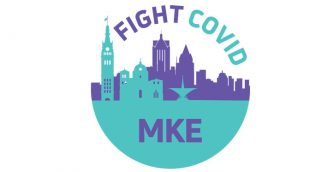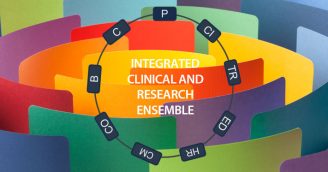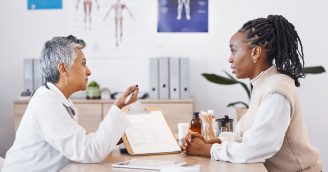
12 Sep Spotlight on the Physical Therapy Department Facilities at MU
The Exercise Science Program in the College of Health Sciences at Marquette University is a subset of the Physical Therapy Department. Exercise science is the study of human movement and the adaptations that occur due to exercise training. Researchers in this field utilize physiological approaches to answer rehabilitation questions. For instance, exercise physiologists may utilize a digital ultrasound to look at blood flow relative to its contribution to fatigue in people who have had radiation therapy due to cancer. One goal of the exercise physiologist is to find limiting systems to determine if exercise will help individuals in clinical populations gain strength in an area of deficiency.
The TTR spoke with Paula Papanek, PhD, associate professor and program director of the exercise science degree program, to get a better understanding of the research resources available to help expedite clinical and translational research. Dr. Papanek’s research focuses on exercise and bone mineral density in multiple sclerosis patients and the impact of folic acid on vascular flow-mediated dilation in elite dancers.
There are five shared laboratories within the Department and efforts are underway to incorporate these facilities as TRUs within the CTSI. These laboratories consist of state-of-the art equipment which can be utilized by researchers for rehabilitation & exercise physiology studies.
What types of technologies and resources are available to CTSI researchers at your facility?
- The Biochemical Laboratory can be utilized for sample processing and analysis of blood, saliva and urine. Basic biochemical and analytical assays for measurement of lipids, salivary cortisol, and DNA extraction, to name a few, can be run routinely in this facility.
- The Body Composition Laboratory houses a GE Lunar Prodigy DEXA which is the gold standard for measuring body composition and bone mineral density (BMD). This instrument uses two different energy rays (dual energy) to scan the body; one energy ray is absorbed more strongly by fat than the other. Computer software can subtract one image from the other, and the difference indicates the amount of fat relative to other tissues at each point. A sum over the entire image enables calculation of the overall body composition. DEXA is a well established low radiation dose technology to measure BMD and body composition. This laboratory is also equipped with a Bod Pod which measures body composition through air displacement for research, clinical, and sport applications. There is also a digital C-arm Fluoroscope system where researchers can evaluate, for instance, the insertion and length of the tendon in terms of performance. There are also specialized treadmills which enable individuals, who are unable to support their entire body weight, to work at 50% or 70% of their load.
- The Strength and Conditioning Research Laboratory is used to teach physical therapists, exercise physiologists, and athletic trainers how to properly lift, design a program, safely spot, or administer plyometrics. From a research perspective, this laboratory can be utilized to strength train or test various individuals to include participants in research studies ongoing in such populations as diabetic adults and elderly women. The lab is well equipped with Olympic weight lifting equipment as well as standard clinical resistance training equipment.
- The Exercise Physiology Laboratory is designed to evaluate both aerobic and cardiovascular parameters. This facility consists of numerous treadmills, cycle ergometers, recumbent ergometers and three metabolic carts, two of which are fully portable and can be taken to an individual’s home, to the lab, or outside for specific testing applications. The laboratory is well equipped with emergency medical equipment and has full 12 lead and exercise lead configuration EKG. The treadmills have a load capacity of 500 lbs running and 800 lbs walking for bariatric research. In addition to metabolic testing, this laboratory can also be utilized to aerobically train individuals and to study patients recovering from cancer or with multiple sclerosis for example.
- The Motion Analysis Laboratory was recently completed and is a full motion capture laboratory consisting of 12 high speed digital cameras (Vicon) and an embedded force plate. Motion capture is a technique utilized to record movement and translate that movement to a digital model. Reflective markers are applied to an individual’s body to identify specific joints or other body landmarks of interest. The forces a body produces while walking are measured through special plates built into the floor along the walking path. When the individual moves over the force plate information is recorded on movement and the reflectors are captured by the cameras. The computer has the ability to locate the reflectors and can record all the information associated with the movement. By breaking this movement down, researchers are able to look for problems in movement, weakness, or asymmetries and to determine the effectiveness of specific interventions.
How can CTSI investigators access the facilities research resources?
The program and our faculty are excited about potential collaborative projects using the resources available. For more information regarding utilization of the research resources available in the Department of Physical Therapy please contact:
Dr. Papanek is the Director of Graduate Studies for the new Ph.D. in CTRH as part of the CTSI.











